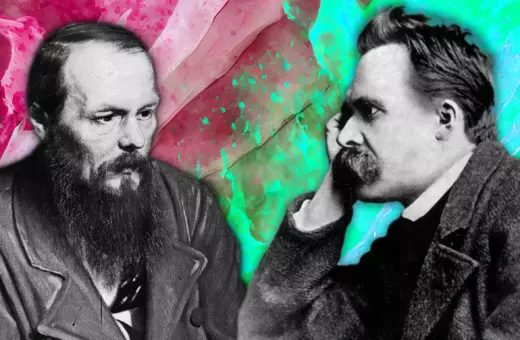We often think of our imagination as consisting of drifting ideas and daydreams. But for novelist and philosopher Iris Murdoch, this view of imagination is radically mistaken. Imagination is not a way to escape the world but the route by which we become positive agents within the world. In this article, Miles Leeson applies Murdoch’s distinction between imagination and fantasy to Murdoch’s own literary work and argues that such a distinction is crucial for our ethical lives.
At the heart of Iris Murdoch’s philosophy is the question, ‘How can we make ourselves morally better?’ This, of course, is the work of a lifetime and Murdoch recognises this by making it a key theme in several of her works, from ‘The Sublime and the Beautiful Revisited’ (1959) through to her final philosophical text Metaphysics as a Guide to Morals (1992) to say nothing of her fictional work. While the general direction of her argument in favour of the active use of the imagination over lazy images of fantasy does not change, it does develop a certain nuance in her later work. Murdoch, like her contemporaries Elizabeth Anscombe, Philippa Foot, and Mary Midgley, wished to reinvigorate ethics in the mid-twentieth century, pushing back against what they saw as a reductive, overly narrow conceptualisation of philosophy as promoted by the analytic linguistics of their colleagues: A. J. Ayer, Gilbert Ryle, Stuart Hampshire and others. Murdoch firmly held that judgments around ethics and aesthetics were far more than mere personal preferences, and her philosophy bears this out. How we place value on art, the natural world, and our fellow human beings was vital for reconstructing a world torn apart by war and violence: nor is it any less vital today.
___
Attentive use of the imagination is, unlike fantasy, not a way to escape the world into a daydream but the route by which we become positive agents within the world
___
So, what exactly does fantasy and fantasising look like for Murdoch? In short, it is the reduction of the object to make it fit in with the parameters of the subject. If, say, I desire another person – and for Murdoch, interpersonal relationships in her philosophy are frequently highlighted – I should not lapse into objectifying them as simply an object of erotic fantasy. Instead, I should invest in actively attempting to perceive them as a unique individual who exists outside of my desire for them, and crucially outside my control and domination. In brief, Murdoch urges us to turn away from an inward fantasy-led life to one that looks outward via the use of the imagination. She tells us that imagining is ‘something that we all do a great deal of the time’ when we consider our lives and actions in relation to the world around us. In her essay ‘The Idea of Perfection’ from 1962 she warns us against thinking that our imaginings are just ‘drifting ideas’ or daydreams. Instead, she says, it is ‘a type of reflection on people which builds detail adds colour, conjures up possibilities in ways which go beyond what could be said to be strictly factual. When this activity is thought to be bad it is sometimes called “fantasy” or “wishful thinking”… Is there not also a good constructive imagination which plays an important part in our life?’ Her answer is that attentive use of the imagination is, unlike fantasy, not a way to escape the world into a daydream but the route by which we become positive agents within the world. This is a key element of her worldview.
___





















Join the conversation